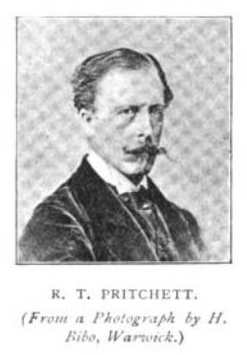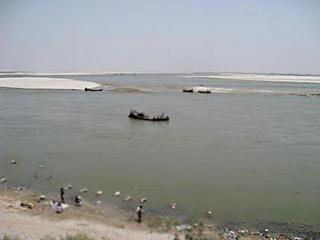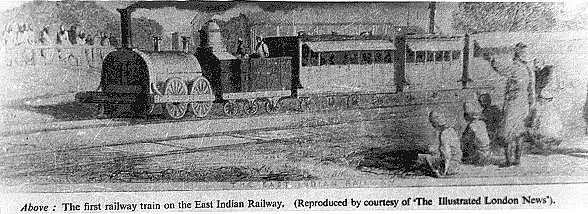|
William Ellis Metford
William Ellis Metford (4 October 1824 – 14 October 1899) was a British engineer best known for designing the Metford rifling used in the .303 calibre Lee–Metford and Martini–Metford service rifles in the late 19th century. Life He was born on 4 October 1824, the elder son of William Metford, a physician, of Flook House, Taunton, by his wife, Mary Eliza Anderdon. He was educated at Sherborne School between 1838 and 1841, and was apprenticed to W. M. Peniston, resident engineer under Isambard Kingdom Brunel, on the Bristol and Exeter Railway. From 1846 to 1850, he was employed on the Wilts, Somerset and Weymouth Railway. After 1850, he worked for Thomas Evans Blackwell, in connection with schemes for developing the traffic of Bristol, and subsequently acted for a short time under Peniston as engineer on the Wycombe railway, residing at Bourne End. During this period, he designed an improved theodolite with a travelling stage and a curved arm upholding the transit axis, ... [...More Info...] [...Related Items...] OR: [Wikipedia] [Google] [Baidu] |
Metford Rifling
Polygonal rifling ( ) is a type of gun barrel rifling where the traditional sharp-edged "lands and grooves" are replaced by less pronounced "hills and valleys", so the barrel bore has a polygonal (usually hexagonal or octagonal) cross-sectional profile. Polygonal riflings with a larger number of edges have shallower corners, which provide a better gas seal in relatively large diameter bores. For instance, in the pre-Gen 5 Glock pistols, octagonal rifling is used in the large diameter .45 ACP bore, which has an 11.23 mm (0.442 in) diameter, since it resembles a circle more closely than the hexagonal rifling used in smaller diameter bores.Barrel History History The principle of the polygonal barrel was proposed in 1853 by Sir |
Alexander Rendel
Sir Alexander Meadows Rendel, (3 April 1829 – 23 January 1918) was an English civil engineer. Early life Rendel was born in Plymouth, the eldest son of the engineer James Meadows Rendel and his wife Catherine Harris. Three of his brothers were civil engineers: George Wightwick Rendel, Stuart Rendel, 1st Baron Rendel (who was also a Liberal MP), and Hamilton Owen Rendel (who designed and supervised the installation of the steam driven compound condensing pump engines, hydraulic accumulators and hydraulic machinery that first operated the bascules of the iconic Tower Bridge in London). He was educated at The King's School Canterbury and Trinity College, Cambridge. Career Rendel was the engineer of the London Dock Company in 1856, and was responsible for the Shadwell Basin, the Connaught Tunnel and the Royal Albert Dock in London, the Albert and Edinburgh Docks in Leith, Workington Dock and Harbour. In 1857-1858 he visited India, and was consulting engineer to the India ... [...More Info...] [...Related Items...] OR: [Wikipedia] [Google] [Baidu] |
British Railway Civil Engineers
British may refer to: Peoples, culture, and language * British people, nationals or natives of the United Kingdom, British Overseas Territories and Crown Dependencies. * British national identity, the characteristics of British people and culture * British English, the English language as spoken and written in United Kingdom of Great Britain and Northern Ireland and, more broadly, throughout the British Isles * Celtic Britons, an ancient ethno-linguistic group * Brittonic languages, a branch of the Insular Celtic language family (formerly called British) ** Common Brittonic, an ancient language Other uses *People or things associated with: ** Great Britain, an island ** British Isles, an island group ** United Kingdom, a sovereign state ** British Empire, a historical global colonial empire ** Kingdom of Great Britain (1707–1800) ** United Kingdom of Great Britain and Ireland (1801–1922) * British Raj, colonial India under the British Empire * British Hong Kong, colonial Ho ... [...More Info...] [...Related Items...] OR: [Wikipedia] [Google] [Baidu] |
People Educated At Sherborne School
The term "the people" refers to the public or common mass of people of a polity. As such it is a concept of human rights law, international law as well as constitutional law, particularly used for claims of popular sovereignty. In contrast, a people is any plurality of persons considered as a whole. Used in politics and law, the term "a people" refers to the collective or community of an ethnic group or nation. Concepts Legal Chapter One, Article One of the Charter of the United Nations states that "peoples" have the right to self-determination. Though the mere status as peoples and the right to self-determination, as for example in the case of Indigenous peoples (''peoples'', as in all groups of indigenous people, not merely all indigenous persons as in ''indigenous people''), does not automatically provide for independent sovereignty and therefore secession. Indeed, judge Ivor Jennings identified the inherent problems in the right of "peoples" to self-determination, as i ... [...More Info...] [...Related Items...] OR: [Wikipedia] [Google] [Baidu] |
1899 Deaths
Events January * January 1 ** Spanish rule formally ends in Cuba with the cession of Spanish sovereignty to the U.S., concluding 400 years of the Spanish Empire in the Americas.''The American Monthly Review of Reviews'' (February 1899), pp. 153-157 ** In Samoa, followers of Mataafa, claimant to the rule of the island's subjects, burn the town of Upolu in an ambush of followers of other claimants, Malietoa Tanus and Tamasese, who are evacuated by the British warship HMS ''Porpoise''. ** Queens and Staten Island become administratively part of New York City. * January 2 – Theodore Roosevelt is inaugurated as Governor of New York at the age of 39. * January 3 – A treaty of alliance is signed between Russia and Afghanistan. * January 5 – **A fierce battle is fought between American troops and Filipino defenders at the town of Pililla on the island of Luzon. *The collision of a British steamer and a French steamer kills 12 people on the English Channel. * Jan ... [...More Info...] [...Related Items...] OR: [Wikipedia] [Google] [Baidu] |
1824 Births
Events January–March * January 1 – John Stuart Mill begins publication of The Westminster Review. The first article is by William Johnson Fox * January 8 – After much controversy, Michael Faraday is finally elected as a member of the Royal Society in London, with only one vote against him. * January 21 – First Anglo-Ashanti War: Battle of Nsamankow – forces of the Ashanti Empire crush British forces in the Gold Coast (British colony), Gold Coast (modern-day History of Ghana, Ghana), killing the British governor Charles MacCarthy (British Army officer), Sir Charles MacCarthy. * January 24 – The first issue of ''The Westminster Review'', the radical quarterly founded by Jeremy Bentham, is published in London. * February 10 – Simón Bolívar is proclaimed dictator of Peru. * February 20 — William Buckland formally announces the name ''Megalosaurus'', the first scientifically validly named non-avian dinosaur species. * February 21 – The Chumash Revolt of 1824 ... [...More Info...] [...Related Items...] OR: [Wikipedia] [Google] [Baidu] |
James Paris Lee
James Paris Lee (9 August 1831 – 24 February 1904) was a British Canadian inventor and arms designer. He is best known for having invented the Lee Model 1879 rifle, which is the first bolt-action detachable box magazine-fed rifle. These features would be incorporated into more successful repeating rifle designs later on, such as in the Lee–Metford and Lee–Enfield rifle series. Early life Born in Hawick, Scotland, Lee emigrated with his family to Galt, Upper Canada in 1836 at age 5. He built his first gun at the age of 12, using an old horse-pistol barrel, a newly-carved walnut stock, and a priming pan made from a halfpenny. The gun failed to function effectively when first fired, but started Lee's interest in gunsmithing and invention. In 1858, James Lee and his wife Caroline Lee (née Chrysler, of the later automotive family) moved to Wisconsin in the US, where they had two sons: William (born in 1859) and George (1860). They later returned to Canada in 1865. Rifle ... [...More Info...] [...Related Items...] OR: [Wikipedia] [Google] [Baidu] |
Sir Henry St
''Sir'' is a formal honorific address in English for men, derived from Sire in the High Middle Ages. Both are derived from the old French "" (Lord), brought to England by the French-speaking Normans, and which now exist in French only as part of "", with the equivalent "My Lord" in English. Traditionally, as governed by law and custom, Sir is used for men who are knights and belong to certain orders of chivalry, as well as later applied to baronets and other offices. As the female equivalent for knighthood is damehood, the ''suo jure'' female equivalent term is typically Dame. The wife of a knight or baronet tends to be addressed as Lady, although a few exceptions and interchanges of these uses exist. Additionally, since the late modern period, Sir has been used as a respectful way to address a man of superior social status or military rank. Equivalent terms of address for women are Madam (shortened to Ma'am), in addition to social honorifics such as Mrs, Ms, or Miss. Etymo ... [...More Info...] [...Related Items...] OR: [Wikipedia] [Google] [Baidu] |
Robert Taylor Pritchett
Robert Taylor Pritchett (24 February 1828 – 16 June 1907) was a gun manufacturer, artist and illustrator. As artist he painted royal ceremonies for Queen Victoria, and he illustrated Darwin's ''The Voyage of the Beagle''. Early life and career He was the son of Richard Ellis Pritchet and his wife Ann Dumbleton; his father was head of the firm of gunmakers at Enfield which supplied arms to the East India Company and to the Board of Ordnance. After leaving King's College School, Robert entered his father's firm. By 1852 he knew the rifle designer William Ellis Metford; the "Pritchett bullet", with a hollow, unplugged base, which he and Metford invented in 1853, brought him fame and an award of £1000 from the government on its adoption by the small-arms committee. As early as 1854 Pritchett was using his rifling, three-grooved rifle of his own invention. The abolition of the East India Company in 1858 deprived Pritchett's firm of its principal customer, and he sought other intere ... [...More Info...] [...Related Items...] OR: [Wikipedia] [Google] [Baidu] |
Enfield Rifled Musket
The Enfield Pattern 1853 rifle-musket (also known as the Pattern 1853 Enfield, P53 Enfield, and Enfield rifle-musket) was a .577 calibre Minié-type muzzle-loading rifled musket, used by the British Empire from 1853 to 1867; after which many were replaced in service by the cartridge-loaded Snider–Enfield rifle. History and development The term "rifle-musket" originally referred to muskets with the smooth-bored barrels replaced with rifled barrels. The length of the barrels were unchanged, allowing the weapons to be fired in ranks, since a long rifle was necessary to enable the muzzles of the second rank of soldiers to project beyond the faces of the men in front. The weapon would also be sufficiently long when fitted with a bayonet to be effective against cavalry. Such weapons manufactured with rifled barrels, muzzle loading, single shot, and utilizing the same firing mechanism, also came to be called rifle-muskets. Royal Small Arms Factory developed the Pattern 1853 Enfiel ... [...More Info...] [...Related Items...] OR: [Wikipedia] [Google] [Baidu] |
Monghyr
Munger, formerly spelt as Monghyr, is a twin city and a Municipal Corporation situated in the Indian state of Bihar. It is the administrative headquarters of Munger district and Munger Division. Munger was one of the major cities in Eastern India and undivided Bengal during Mughal period and British Raj. It is one of the major political, cultural, educational and commercial centers of Bihar and Eastern India. Munger is situated about 180km east of capital city Patna, about 480km west of Eastern India's largest city Kolkata and 1200km from country's capital New Delhi. Historically, Munger is known for being an ancient seat of rule. The twin city comprises Munger and Jamalpur situated on the southern bank of the river Ganges. It is situated 8 km from Jamalpur Junction, 180 km east of capital city Patna and 430 Km from Kolkata the capital of West Bengal. Munger is said to have been founded by the Guptas (4th century CE) and contains a fort that houses the to ... [...More Info...] [...Related Items...] OR: [Wikipedia] [Google] [Baidu] |
East India Railway
The East Indian Railway Company, operating as the East Indian Railway (reporting mark EIR), introduced railways to East India and North India, while the Companies such as the Great Indian Peninsula Railway, South Indian Railway, Bombay, Baroda and Central India Railway and the North-Western Railway operated in other parts of India. The company was established on 1 June 1845 in London by a deed of settlement with a capital of £4,000,000, largely raised in London. 1845–1849 The first board of directors formed in 1845 comprised thirteen members and Rowland Macdonald Stephenson became the first managing director of the company. Rowland Macdonald Stephenson (later Sir Rowland, but familiarly known as Macdonald StephensonDiaries of George Turnbull (Chief Engineer, East Indian Railway Company) held at the Centre of South Asian Studies at Cambridge University, England) and three assistants travelled from England in 1845 and ''"with diligence and discretion"'' surveyed, stat ... [...More Info...] [...Related Items...] OR: [Wikipedia] [Google] [Baidu] |








